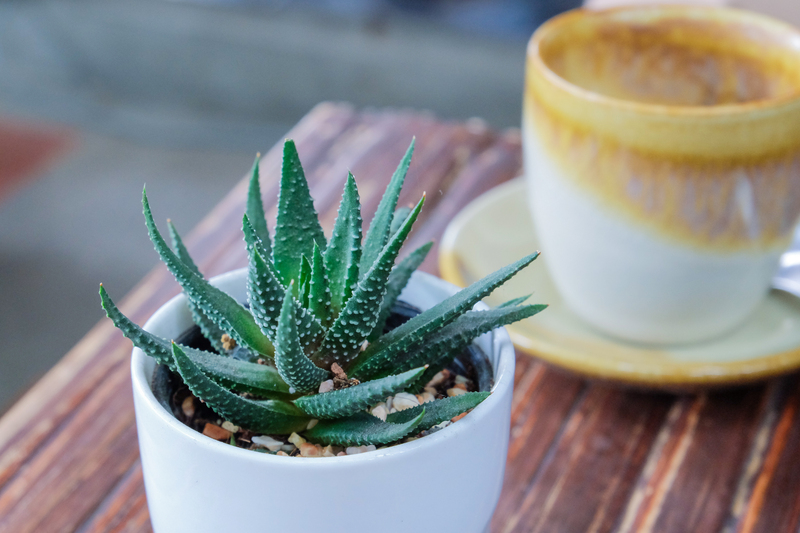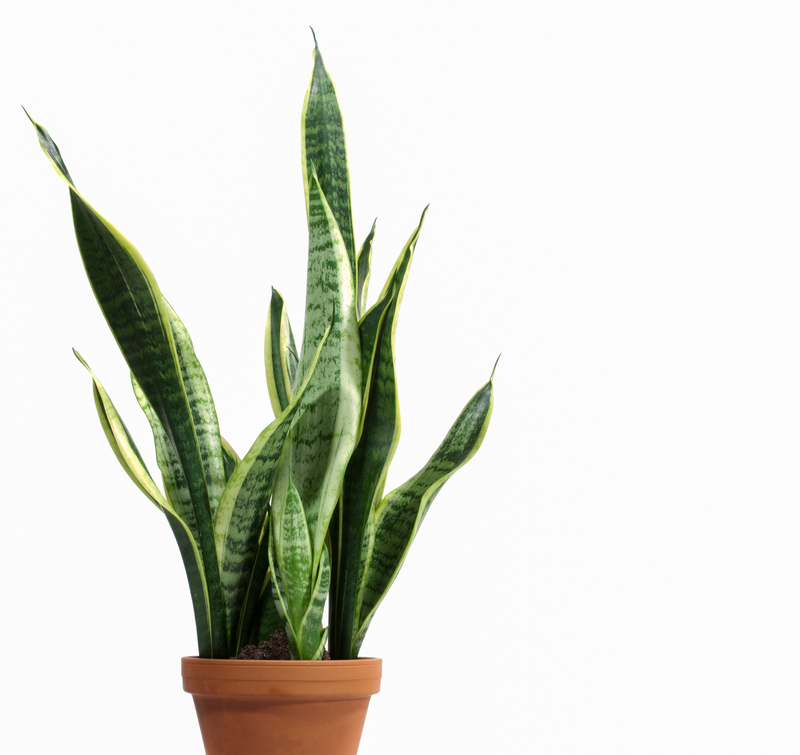The Art of Creating a Thriving Herb Garden
Posted on 22/08/2025
The Art of Creating a Thriving Herb Garden
Are you dreaming of stepping outside your door to pick fresh basil for your pasta or calming peppermint for your tea? Imagine a vibrant patch bursting with lush, fragrant greenery, filling your senses and your dishes with homegrown flavors. Mastering the art of creating a thriving herb garden isn't just a rewarding hobby--it's a transformative experience that connects you with nature, elevates your culinary creations, and even boosts your wellbeing.
Whether you're a novice exploring the joys of gardening or an experienced green thumb, cultivating healthy, flourishing herbs can transform your outdoor or indoor space. This comprehensive guide will help you design, establish, and maintain a productive, beautiful herb garden no matter your available space or skill level.
Why Grow Your Own Herb Garden?
Herb gardening isn't just about beauty and aroma; it offers numerous practical advantages:
- Fresh Flavors at Your Fingertips - Homegrown herbs offer robust, vibrant flavors that store-bought versions can never match.
- Sustainability and Savings - Growing your own herbs reduces packaging waste, minimizes trips to the store, and saves money in the long run.
- Health Benefits - Many herbs are rich in vitamins, antioxidants, and anti-inflammatory properties.
- Aesthetic Appeal - Herb gardens can transform patios, balconies, or windowsills into lush, inviting retreats.
- Therapeutic Rewards - Connecting with nature through gardening is proven to reduce stress and boost mood.

Understanding the Essential Elements of a Thriving Herb Garden
To create an abundant herb garden, consider these crucial elements:
- Sunlight - Most herbs thrive in full sun, requiring at least 6-8 hours of direct sunlight daily.
- Soil Quality - Well-draining, rich soil is key to healthy root systems.
- Watering Practices - Consistency is important, but most herbs dislike soggy roots.
- Container or Ground? - Decide whether you'll grow herbs in raised beds, traditional garden plots, or containers.
- Maintenance - Herbs need regular pruning and harvesting to encourage bushy growth and prevent flowering (which can reduce flavor).
Planning Your Herb Garden Layout
Herb garden design varies based on available space, sunlight, and personal taste. Here are some practical layouts to consider:
1. Container Herb Garden
Perfect for urban dwellers, balconies, and patios, container gardens let you group herbs with similar care needs. Choose pots with good drainage and arrange by height, placing taller herbs like rosemary in the back and cascading ones like thyme in front.
2. Kitchen Windowsill Herb Garden
Ideal for fresh snipping while cooking, a windowsill herb garden requires bright light and compact herb varieties. Use small planters and rotate them occasionally for even growth.
3. Raised Bed or Traditional In-Ground Herb Garden
Outdoor gardeners can dedicate a sunny patch to a formal or informal herb bed. Arrange herbs by height, spread, and water requirements. Use paths or stepping stones for easy access.
4. Vertical Herb Garden
Limited on space? Vertical gardens use hanging pockets, stacked pots, or wall-mounted planters, maximizing your growing area and creating an eye-catching display.
Selecting the Right Herbs for Your Garden
Choose herbs based on your climate, culinary favorites, and intended use. Here are some of the best herbs for a thriving garden:
- Basil - Loves warmth and sunlight; ideal for Mediterranean dishes.
- Mint - Vigorous grower, best in containers to contain its spread; use for teas, desserts, and cocktails.
- Parsley - Tolerates partial shade; rich in vitamins.
- Rosemary - Hardy shrub; aromatic addition to roasted dishes.
- Thyme - Drought-tolerant and great for borders or edible groundcover.
- Cilantro/Coriander - Cool-season favorite, essential for Mexican and Indian cuisine.
- Chives - Delicate onion flavor, great in salads and garnishes.
- Sage - Woody perennial with savory, earthy flavor.
- Dill - Annual ideal for pickling and seafood dishes.
- Oregano - Sprawling plant with bold flavor for Italian and Greek food.
Tip: Group herbs with similar water and light preferences to simplify care and ensure vigorous growth.
Soil Preparation: The Foundation of Healthy Herbs
Rich, well-draining soil is essential for thriving herbs. Follow these soil preparation tips:
- Amend with Organic Matter: Mix compost or well-rotted manure into sandy or clay soil to improve fertility and drainage.
- pH Levels: Most culinary herbs thrive in slightly acidic to neutral soil (pH 6.0-7.0).
- Raised Beds: If your native soil is poor, consider raised beds filled with high-quality garden soil and compost.
- Container Mix: For pots, use a premium organic potting mix blended with perlite for drainage.
Planting Techniques for a Flourishing Herb Garden
Success in herb gardening starts with proper planting.
From Seeds
Many annual herbs, like basil, cilantro, and dill, grow well from seed. Plant seeds according to the packet instructions, keeping the soil moist until germination. Thin seedlings for optimal air circulation and robust plants.
Transplants and Cuttings
Perennial herbs like rosemary and thyme often do best when started from young nursery plants or cuttings. Dig a hole slightly larger than the pot, tease out the roots, and plant at the same level as the nursery container. Water generously after planting.
Spacing
Provide ample space for each herb to develop fully:
- Larger shrubs (rosemary, sage): Space 18-24" apart
- Medium herbs (basil, parsley): Space 12-18" apart
- Spreading herbs (thyme, oregano): Space 8-12" apart
The Secrets of Watering and Fertilizing Herbs
Consistent watering is vital for robust growth, but avoid soggy soil. Here's how to get it right:
- Morning Watering: Water early to minimize evaporation and allow leaves to dry, reducing the risk of disease.
- Check Soil Moisture: Stick a finger into the soil. Water when the top inch feels dry.
- Mulching: Apply a thin layer of straw or bark to conserve moisture and deter weeds, but avoid placing mulch directly against stems.
- Fertilize Sparingly: Over-fertilizing produces leafy but less flavorful herbs. Feed with a balanced organic fertilizer once or twice during the growing season.
Pruning and Harvesting: Key to a Productive Herb Patch
Regular pruning and harvesting are the cornerstone of herb garden success. Harvesting encourages new growth and keeps herbs producing longer.
Best Practices for Harvesting
- Morning Harvest: Pick leaves in the morning when oils are most concentrated for peak flavor.
- Snip, Don't Strip: Cut with clean scissors or pruning shears, avoiding tearing stems.
- Never Take More Than One-Third: Don't harvest more than one-third of the plant at once to prevent stress.
- Pinch Flower Buds: Unless you want herbs to self-seed, remove flowers promptly to keep plants focused on leaf production.
Managing Pests and Diseases in Your Herb Garden
Most herbs are hardy and less prone to pests thanks to their aromatic oils. Still, keep an eye out for:
- Aphids & Whiteflies: Spray with water or neem oil if infestations occur.
- Fungal Diseases: Good air circulation and watering at the base (not on leaves) prevent mildew and rot.
- Slugs & Snails: Remove by hand or use copper tape in container gardens.
Choosing disease-resistant varieties and practicing crop rotation each season can keep your herb garden vibrant and healthy year after year.
Extending the Herb Harvest: Drying and Preserving
Your thriving herb garden can provide fresh flavors year-round if you preserve the bounty:
- Drying: Bundle sturdy herbs (rosemary, oregano, thyme) and hang upside down in a cool, well-ventilated space.
- Freezing: Chop soft herbs (basil, parsley, cilantro) and freeze in ice cube trays with olive oil or water for instant flavor boosters.
- Herb Butters & Oils: Mix chopped herbs with softened butter or olive oil for easy gourmet additions to meals.
Unique Herb Garden Ideas to Inspire You
Ready to take your herb growing skills to the next level? Try these creative concepts:
- Medicinal Herb Garden: Grow lavender, chamomile, and lemon balm for homemade teas and balms.
- Pollinator-Friendly Herb Patch: Add flowering herbs like dill, fennel, and borage to attract bees and butterflies.
- Herb Spirals: Build a spiral mound with stones, creating microclimates for different herbs in a small footprint.
- Theme Gardens: Design a pizza herb garden (basil, oregano, thyme, rosemary) or cocktail garden (mint, lemon verbena, basil, lavender).
Common Mistakes to Avoid When Creating an Herb Garden
Even experienced gardeners can stumble. Watch for these pitfalls to ensure your herb patch flourishes:
- Overcrowding: Give each plant enough space for sunlight and airflow.
- Overwatering: Most herbs hate soggy soils. Let the surface dry out between waterings.
- Ineffective Harvesting: Neglecting regular harvesting leads to leggy, less productive plants.
- Neglecting Sunlight Needs: Most herbs need at least 6 hours of sun per day to develop aroma and flavor.

Frequently Asked Questions About Creating a Thriving Herb Garden
How much sunlight do herbs need?
Most herbs require at least 6 hours of direct sunlight a day, with some thriving better in 8 or more hours. Shade-tolerant herbs like mint and parsley can manage in partial sunlight.
Can I grow herbs indoors?
Absolutely! Choose a sunny windowsill with at least 6 hours of light. Supplement with grow lights if natural sunlight is limited.
What are the easiest herbs for beginners?
Basil, mint, chives, parsley, and thyme are simple to grow and provide quick rewards for novice gardeners.
How can I keep potted herbs alive?
Ensure pots have good drainage, use light-rich potting mix, water consistently, and fertilize sparingly. Regular harvesting is essential for healthy growth.
Should I grow herbs from seeds or seedlings?
Fast-growing annual herbs like basil and cilantro do well from seeds. For slow-growing perennials, buying transplants is easier and yields quicker results.
Conclusion: Cultivating the Art--and Joy--of a Vibrant Herb Garden
Embracing the art of creating a thriving herb garden connects you to ancient traditions and modern culinary delights alike. From choosing the right varieties and ideal locations to nurturing with mindful care, each step brings you closer to a flavorful, ever-renewing harvest. With these expert tips and creative ideas, your garden--no matter how large or small--can become a lush sanctuary of scents, tastes, and inspiration.
Start today, and soon you'll be savoring the rewards of your thriving herb garden every day!

